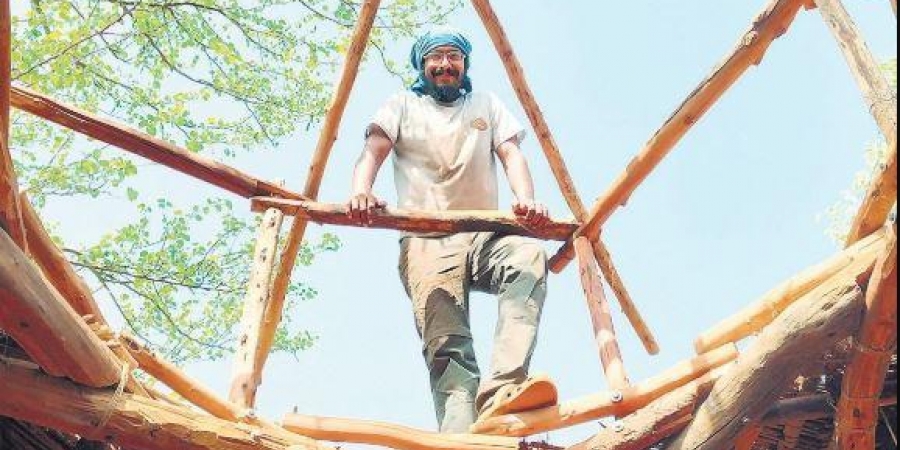 Amarnath Duleep, an Indian architect who experiments with green living, has learned how to make mud homes in Tamil Nadu, at an organization which teaches sustainable building techniques. He applies completely natural techniques for his projects, using only local materials.
Amarnath Duleep, an Indian architect who experiments with green living, has learned how to make mud homes in Tamil Nadu, at an organization which teaches sustainable building techniques. He applies completely natural techniques for his projects, using only local materials. 
His partner is Mumbai-based Diana Mowdawala, who embellishes his mud buildings with intricate natural artwork. “Our collaboration wasn’t planned. Looking back, it seems inevitable. I delve into the technical aspects of the work, experimenting with natural building practices such as mixing mud in different proportions with lime, terracotta, etc, which can be used as mortar or plaster,” says Amarnath.
He sees himself more of a sculptor than an architect. He admits that not everyone is excited about mud homes. “Mud houses are often associated with dingy, ramshackle huts. On the contrary, if finished in the right way, their surfaces can be made to gleam like polished, refined stone,” he says.
Contemporary construction theory has fostered the common belief that mud is not durable. Amarnath says to the contrary, earth structures can last for decades, as long as “they are shielded by sturdy roofs”. He agrees that natural buildings are more susceptible to termites. His solution is borrowed again from ancient practice, such as adding slaked lime and neem to help fight termites.
Paints are not used in Amarnath and Diana’s buildings. Nature’s bounties enrich Diana’s palette; she uses plaster sgraffito (decoration created by scratching through surfaces to reveal a lower layer of a contrasting color) in her art.
“It’s time we took a leaf out of the manuals of our ancestors and explored the viability of re-engineering old building materials to be compatible with our modern world,” says Amarnath. Mud flinging just got a whole new meaning.
See www.newindianexpress.com to read the original article.
